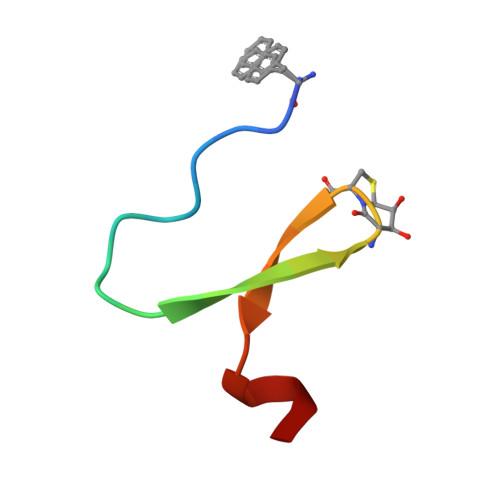Structural Characterization of a Beta-Turn Mimic within a Protein-Protein Interface.
Eckhardt, B., Grosse, W., Essen, L., Geyer, A.(2010) Proc Natl Acad Sci U S A 107: 18336
- PubMed: 20937907
- DOI: https://doi.org/10.1073/pnas.1004187107
- Primary Citation of Related Structures:
2WW6, 2WW7 - PubMed Abstract:
β-Turns are secondary structure elements not only exposed on protein surfaces, but also frequently found to be buried in protein-protein interfaces. Protein engineering so far considered mainly the backbone-constraining properties of synthetic β-turn mimics as parts of surface-exposed loops. A β-turn mimic, Hot═Tap, that is available in gram amounts, provides two hydroxyl groups that enhance its turn-inducing properties besides being able to form side-chain-like interactions. NMR studies on cyclic hexapeptides harboring the Hot═Tap dipeptide proved its strong β-turn-inducing capability. Crystallographic analyses of the trimeric fibritin-foldon/Hot═Tap hybrid reveal at atomic resolution how Hot═Tap replaces a βI'-turn by a βII'-type structure. Furthermore, Hot═Tap adapts to the complex protein environment by participating in several direct and water-bridged interactions across the foldon trimer interface. As building blocks, β-turn mimics capable of both backbone and side-chain mimicry may simplify the design of synthetic proteins.
Organizational Affiliation:
Fachbereich Chemie, Philipps-Universität Marburg, Hans-Meerwein-Strasse, D-35032 Marburg, Germany.

















